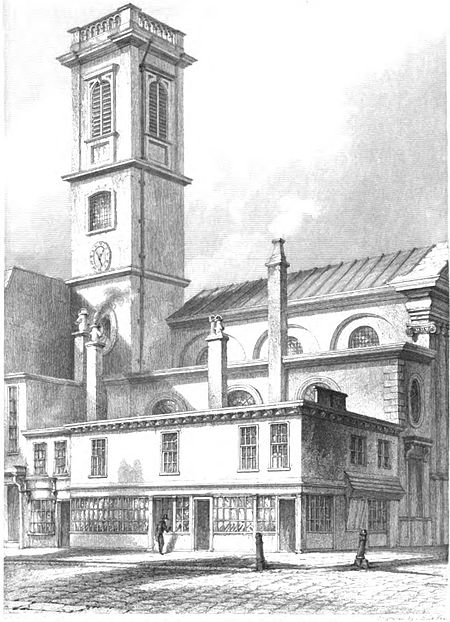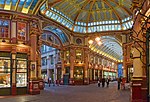St Dionis Backchurch
1878 disestablishments in EnglandBuildings and structures demolished in 1878Christopher Wren church buildings in LondonChurches rebuilt after the Great Fire of London but since demolishedUse British English from November 2014

St Dionis Backchurch was a parish church in the Langbourn ward of the City of London. Of medieval origin, it was rebuilt after the Great Fire of London to the designs of Christopher Wren and demolished in 1878.
Excerpt from the Wikipedia article St Dionis Backchurch (License: CC BY-SA 3.0, Authors, Images).St Dionis Backchurch
Gracechurch Street, City of London
Geographical coordinates (GPS) Address Nearby Places Show on map
Geographical coordinates (GPS)
| Latitude | Longitude |
|---|---|
| N 51.511944444444 ° | E -0.083888888888889 ° |
Address
XL
Gracechurch Street 70
EC3V 0XL City of London
England, United Kingdom
Open on Google Maps










